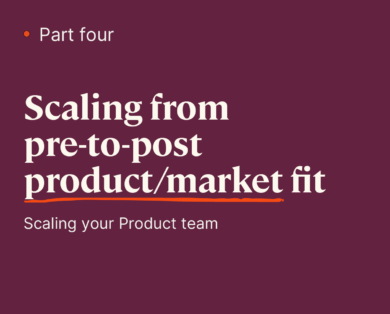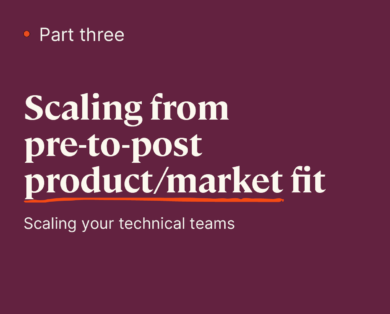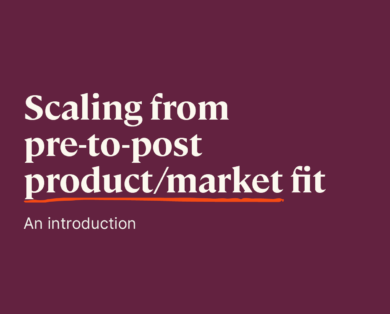- 20 November, 2024
In the current economic environment, profitability and efficiency are constantly under scrutiny. It’s becoming more important than ever for CPOs to ensure that their teams are moving the needle on business objectives.
This includes translating those objectives into measurable KPIs, cascading them down to your product teams and guaranteeing delivery against those objectives.
But how can you keep your product team motivated and driven throughout this journey? What can you do to keep the pendulum swinging between product-obsessed and commercially-minded?
For the second piece in our series on maximising the value of your product function, I’m taking a look back at the keynote from this year’s Balderton CPO Summit: “How to ensure that your product team is moving the needle on business objectives”. During the panel, Gustaf (CPO at Voi), Mairead (CPO at Contentful) and James (CPO at Lendable) shared learnings from their extensive combined experience leading product teams.

Gustaf, Mairead and James at the CPO Summit. The panel was moderated by Balderton Partner, Suranga.
Empower your team within finite parameters
Giving your team ownership of their KPIs, and delivering against them, can often make them much more passionate about delivery. This necessitates guardrails, along with the autonomy to deliver within them. Freedom to choose the most efficient way to move the needle means that your product org can stay agile, and isn’t dependent on micromanagement to succeed. In Mairead’s words, it ensures that product is not just a delivery function.
Make sure you’re cascading the right incentives to your team
As Gustaf put it, part of the role of a CPO is steering the ship, and explaining to the product team where you’re going – as well as why. Translating the leadership team’s vision into bitesize chunks, and distributing them across your product organisation in a way that ultimately delivers on the company’s objectives. It’s important – however – that you’re giving your team ownership of the right KPIs, and incentivising the right behaviours. Otherwise, this ownership and drive to deliver will be misplaced, and won’t move the needle on your business objectives. Careful calibration of these coordinated pieces is crucial, and James recommends constant “sampling” to detect when things are going wrong.
Simple and effective beats complex every time
Objectives should be simple and effective, rather than establishing 40 different metrics that confuse the team. Aim for five key things the company wants to achieve in the next year, and decide how you’re going to measure them. Empower your product team to own each one of these metrics, and to deliver against them. James recommends a simple framework that should fit on a few slides: what was achieved last quarter, what will you achieve next quarter, and what is your 3-4 quarter vision. Too many metrics are difficult to track back to moving overall business performance. Mairead recalled that once people are given metrics to own, it’s much harder to take them away.
Build a culture that can withstand the hard times
Difficult situations and external shocks often show the cracks and weaknesses in a team or company. Gustaf emphasised the importance of building a strong team spirit and consistent objective-driven culture across your company – not just in your product or commercial teams. Objectives and metrics should cascade down across the whole organisation, and everyone should be pulling together across the entire firm to deliver on them.
Thanks to our panellists for an open and thought-provoking session, stay tuned for more content in our series on maximising the value of your production function.














